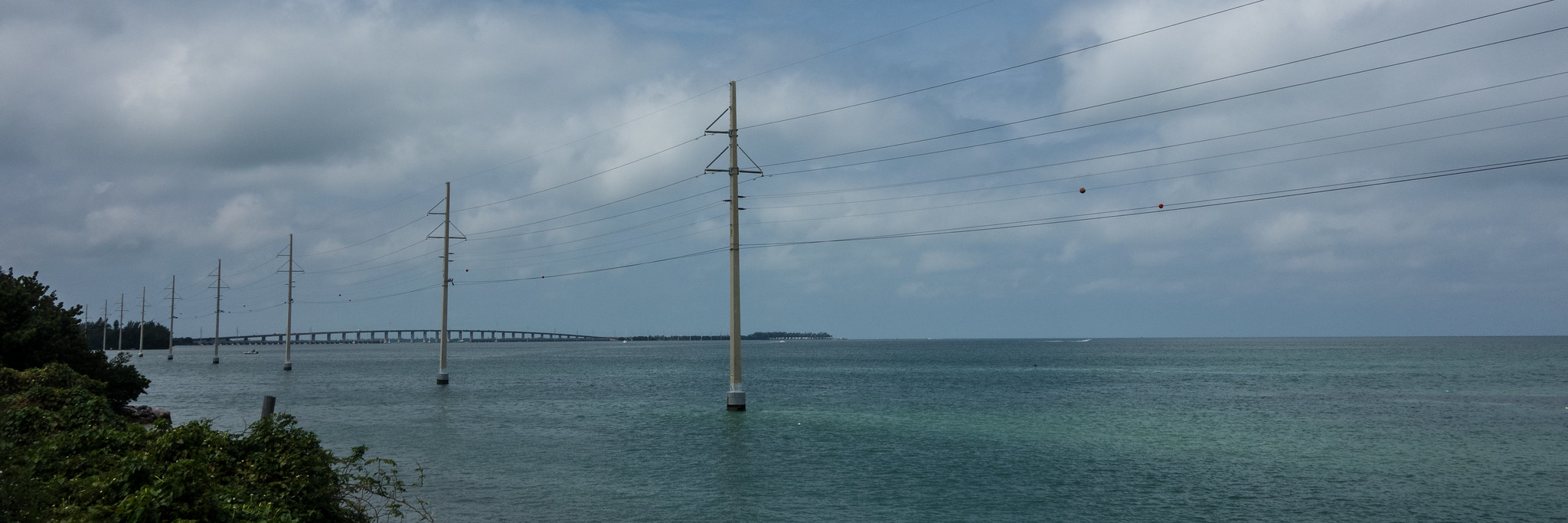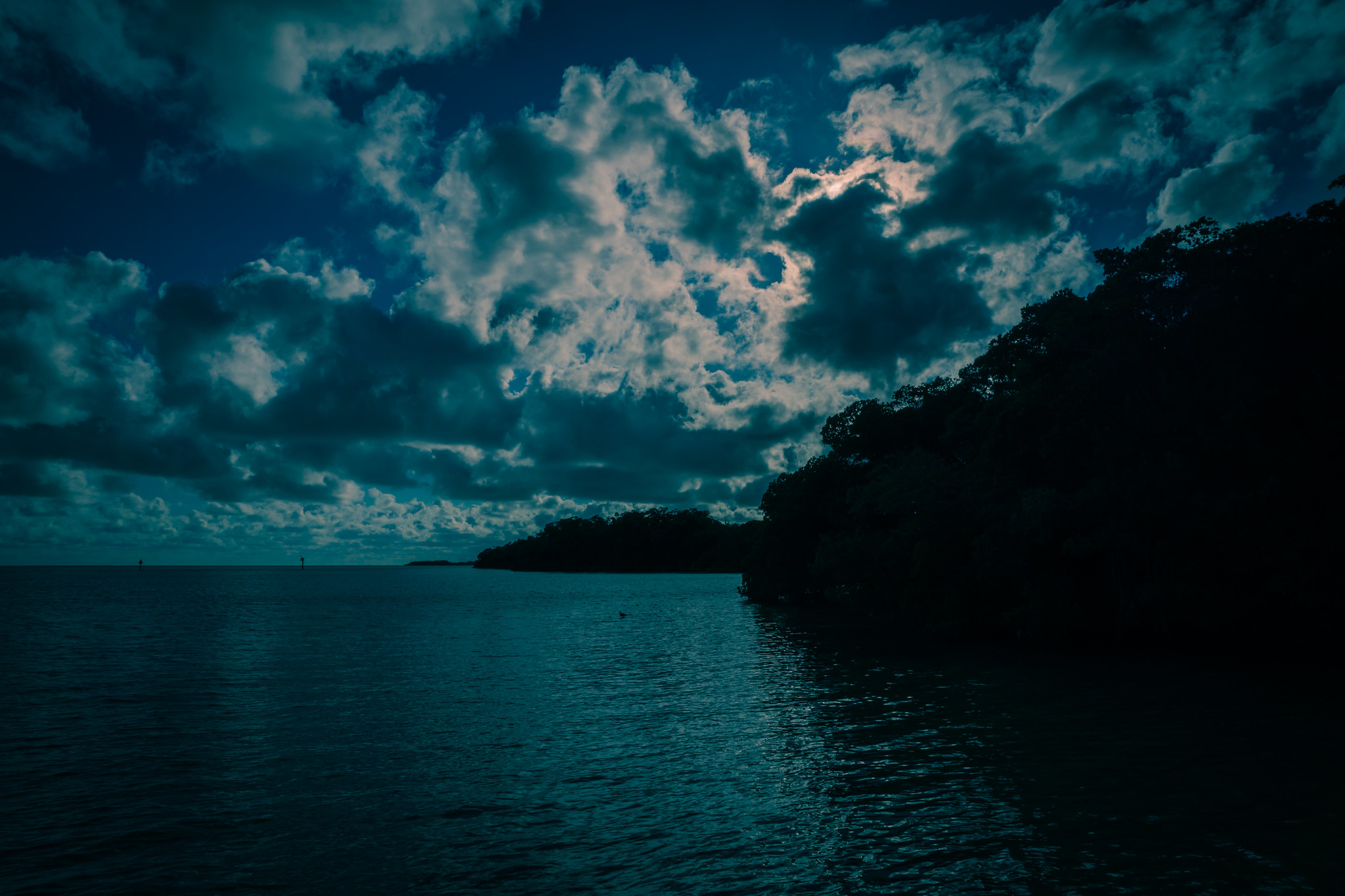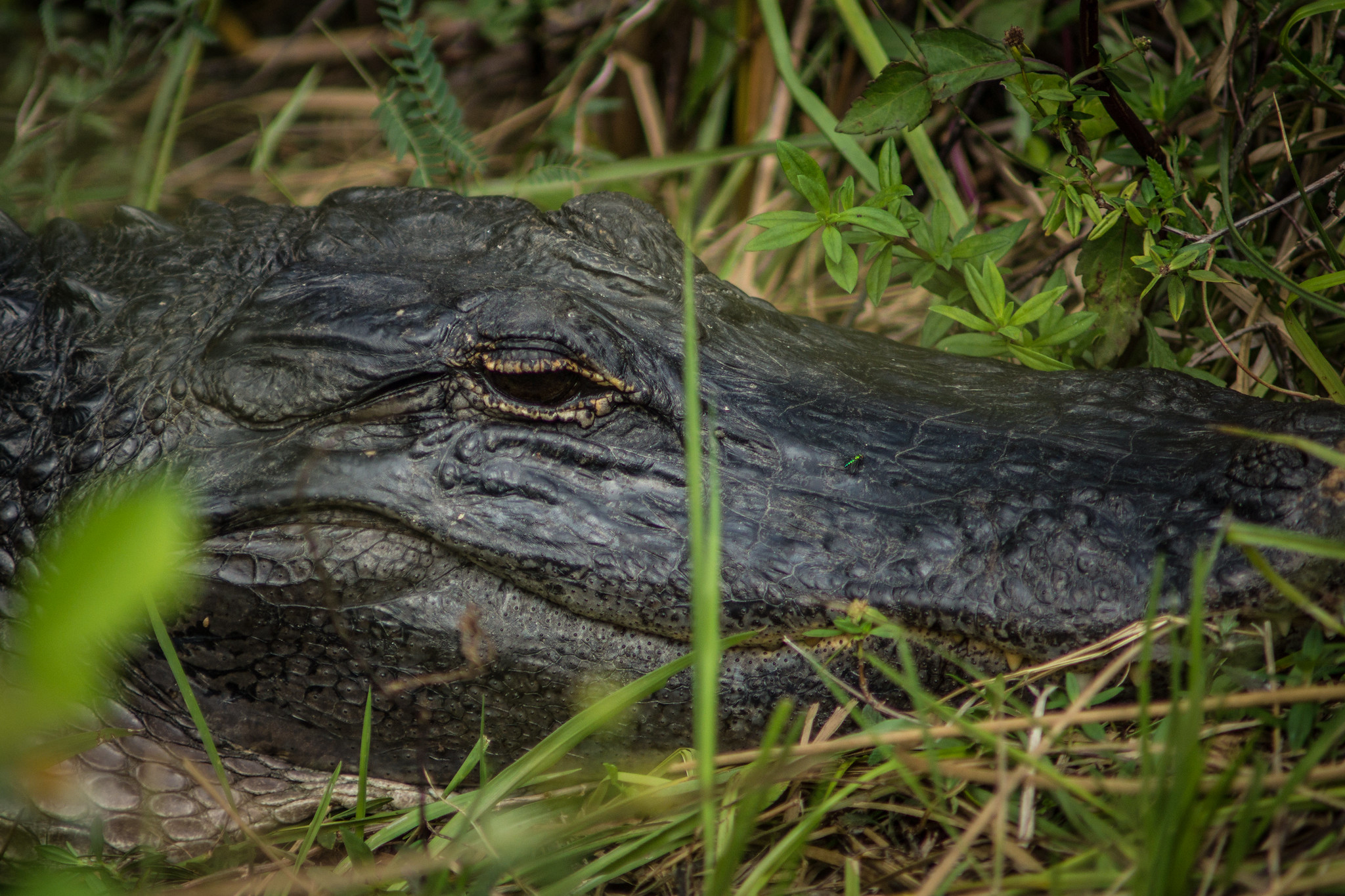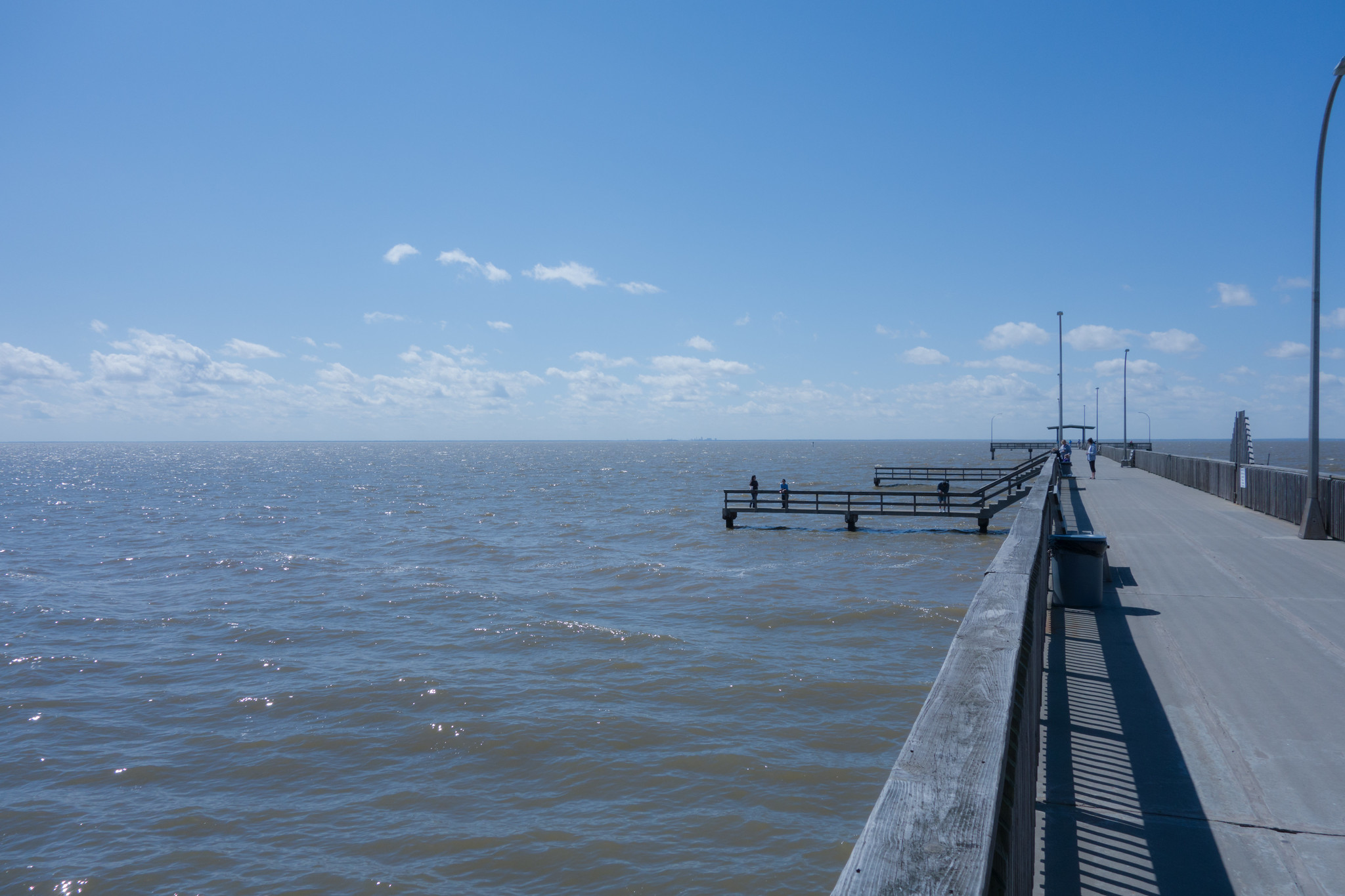
Florida Keys to Naples
[Note: This is a graphically heavy page, and is best viewed on a large screen. As such, it may take a few moments to fully load.]
I left the madness of South Beach and headed inland a little before turning south. I was next going to drive down to Key West. I knew that this would be a spectacular drive and despite worrying that it perhaps look better on film than it really is, that’s not the case at all.

Passing through Homestead you head south on Route 1, until suddenly you’re out and into the ocean, driving along a narrow strip of land with water on either side. Once onto the Florida Keys themselves you have a choice. Towards the north end is Key Largo, but you’re probably heading south towards Key West, still some 100 miles away.
There is essentially a single road, which for large part is a single lane, running down through the Keys. At various points the islands expand, there may be parkland, towns, resorts and retirement homes. Land is clearly at a premium though.
The Keys are joined by a series of bridges that the road crosses. At times you can see the remains of the Overseas Railway, which operated for nearly 25 years until 1935 when the devastating Labor Day Hurricane destroyed large parts of the Keys killing hundreds and wrecking the railway. The remains of various bridges that the railway used are visible from the newer road bridges.
At Long Key I stopped to visit the small State Park where a series of trails gives visitors an idea of what the virgin vegetation would have been like before so many of the Keys were developed. Beyond that was the city of Marathon, and then Seven Mile Bridge, the longest and most spectacular of the Keys’ bridges spanning, as its name suggests, a full seven miles.
Passing Big Pine Key and No Name Key (the names are really rather wonderful), the road headed on until finally you reach your destination – Key West. At that point – there are no more. Only the Caribbean awaits you.
I parked up near the small South Beach and enjoyed some time there swimming in the crystal clear waters. Just up the coast are restricted naval areas, and beyond is the historic city itself.
Key West is both a beautiful place, and a tremendously disappointing place. You do feel like you’re in another world, and the buildings are mostly beautiful and immaculately cared for. But on the other hand it’s not so dissimilar to parts of Miami, just with a slightly different clientele. I suspect the person responsible is Ernest Hemingway.
Hemingway lived in Key West for nearly ten years, and his house there is now a museum. He wrote books including To Have and Have Not there, and you imagine that life was perhaps a little rawer in the thirties than it is today.
The reason I blame Hemingway is that it feels like a certain type of American flies down here to live their own Hemingway adventure. There’s a small airport on the island, and ready supply of fishing boats willing to take the moneyed tourist out to sea to go deep-sea fishing and catch a marlin.
While the city is beautifully kept (I would describe it as a town, but in America you really only have cities), yet the main thoroughfare is crammed full of cheesy shops that wouldn’t look amiss in a slightly tacky seaside resort. More of the same tacky cocktails and shops selling t-shirts with crude logos. A bit like I expect you’d find in Blackpool or Ayia Napa.
Because it seems squarely aimed at near-retirement-aged American dentists (perhaps I’ve read too many Carl Hiaasen novels?), the accommodation is extraordinarily expensive. I couldn’t find anywhere to stay in Key West itself for a remotely reasonable price.
Instead I had to double back all the way to Marathon where an independent motel was more affordable. By this point it was dark and the owner phoned me to say that he was going home, but that he’d leave the door unlocked so I could get in. I’d settle up in the morning!
Even this motel was by far the most expensive night in a motel I would spend during my time in the US – and I got to know motels pretty well. Remoteness does not come cheap.

25th March
I was ready to leave the Keys behind me and experience some actual Florida wildlife, by heading into the Everglades National Park.
Florida’s own worst enemy tends to be itself, and the Everglades National Park is an attempt to stave off developers’ attempts to ruin the entire State’s ecosystem. That said, every extra development, and particularly the water needs of those new people, places ever greater demands on the ecology of the place. Most of Florida used to be like the Everglades National Park, but today land is used for crops or housing and it has had a ruinous knock-on effect on the local wildlife.
You pay a modest entry fee to enter US National Parks, but invariably it’s exceptional value, the ticket, usually lasting several days, allows you access to various park-run events, walks and talks.
I stopped at the visitor centre to get some ideas and a ranger immediately started suggesting things that I might like to do. I was standing there wearing a pair of shorts. He looked me up and down and asked me whether I had “long pants” with me? I said I did, and he signed me up for what I later discovered was a “slough slugging.”

The Anhinga Trail is a more leisurely walk, but it does introduce you to the region’s alligators. You quickly realise that they’re absolutely everywhere. The trail takes you past some great watering holes where the alligators bask while digesting their meals. The bird life too is fabulous, which a rich variety of birds readily observable.

Next up was a cycle ride – accompanied by a ranger who talked us through lots of the wildlife and the different ecosystems the park has to offer. This was nothing strenuous, and we all got to walk away with a National Park water bottle.
I was due to go “slough slugging” in the afternoon, but it turned out that I was the only person who’d signed up. The ranger wasn’t too keen to only take one person, so she booked me onto the next day’s trip which she guaranteed would go ahead. With an afternoon suddenly at my disposal, I drove further into the park down and down to Flamingo, where the Everglades meet the coastal waters.

Joining a boat trip, we went into the shallow waters where we saw porpoises and various mangroves peeking out of the water. As the sun set it was all really beautiful.


The one thing worth noting however is that Flamingo is very much misnamed. Not only were there no flamingos present when I visited, but it turns out that there are never any flamingos there. It was suggested that the place was so named to encourage tourists to visit.

I returned to the park the next day, where I was keen to try “slough slogging.” We first drove away from the main tourist areas of the park, and pulled up on a roadside a few miles away. I was by now no longer the only person signed up for the trip, and there were about seven or eight of us. The ranger leading us then handed us each a long wooden pole. We’d need this to avoid getting too wet and to use as a walking stick.

Basically we were heading out into the wetlands. We would be wading nearly waste deep through water and mud, looking at the flora and fauna. No, we were told, there probably wouldn’t be any alligators. But this was a wild habitat.

I quickly realised that my GoreTex shoes were getting wrecked but there was nothing I could do now! I’d thought they might be getting a bit wet, but hadn’t really counted on the mud. And I hadn’t considered how deep the water would be. On top of that, I wanted to make sure that my camera stayed dry, having it swing from my neck. The pole was essential because the mud pulled hard on your shoes.
But the walk was fantastic. You really felt that you were exploring the Everglades. This was no longer just a tourist “thing” – but getting properly out there into the wild. The cypress trees were stunning and the experience was wonderful. This was easily the best thing I did in Florida and would recommend it to all visitors.
I knew that just outside the park, I could get on an air-boat and go racing around the wetlands on one of those – but that feels really hackneyed. I wasn’t interested. This was the real Florida.

When we got back from the walk I had two problems. My shoes were a muddy mess – and they were the only shoes I had with me – and I’d managed to get my car stuck in the mud. Lots of shouted instructions from a pair of bikers got my car out, and I ended up driving barefoot back towards Homestead where I was staying.
First stop, however, was a branch of Walmart, where I picked up the cheapest pair of trainers I could find. I was feeling guilty enough as it was trailing mud throughout their store. Then it was a large pack of kitchen towels, and back to the motel to get my shoes cleaned up and dried. Somehow, by the next day, they were as good as new!
Watching TV that evening, I noticed another type of advert – this time one that you’d only see in southern Florida. It plays on consumers’ fears. A glazing company explains that locals have been “very lucky” that it has been eight years since the last hurricane. They should immediately invest in stormproof glazing. The ad is accompanied by scary satellite imagery of hurricanes and so on. Of course, if I lived in this part of Florida I probably would try to make my home hurricane proof, but I’m not sure that this is the best way of persuading me.
27 March
Today would be a day of driving in straight lines. To start with I was heading north for twenty miles, then west on Route 41 that slices through the middle of the Everglades.

First stop was another part of the national park – Shark Valley. Again, I’m not sure entirely why it is so named, since I’m pretty certain that there are no sharks to be found anywhere nearby. But once parked up, you have the choice of a longish walk to a lookout station, taking a “land train,” or hiring a bike. Needless to say that I took the latter option. But if I thought there were a lot of alligators on The Anhinga Trail, that was nothing as to the number in Shark Valley.
As I cycled along the trail, I regularly had to swerve around a large alligator blocking my path. More worrying was a young mother who was leading her kids along on their bikes. The youngest lad looked very uncertain on his one and at one point the child very nearly came to grief on a grass verge. This got one of the land train drivers very upset and he shouted at the mother, because the child had landed in the grass just a few feet away from a family of alligators!
Remarkably the mother took it all in her stride, although I was pleased to see that she turned around a few minutes later and thought better of completing the 15 mile loop a ridiculous distance for them to have attempted.

Then it was another 80 miles west to the city of Naples. I was visiting my uncle and his partner who spend their winters here. Naples, I think it’s fair to say, is very much a typical Florida retirement community. Everywhere is beautifully laid out and there are pristine homes often behind gates.
I gave the security guard at one such gate my details and he furnished my car with a pass, raising the barrier leaving me free to enter what was a combination of country club, golf club and a retirement home complex. I didn’t like to ask my uncle quite why he chose to live by the fairway of a golf course if he didn’t like golf – it felt rude. But it’s undoubtedly a lovely area even though it wouldn’t be quite where I’d choose to live.
That said, it does become unbearably hot in the summer (my uncle moves away for those months), and the thin gauze on the balcony suggests that mosquitos are probably a presence. I was told that alligators do find their ways onto the fairways from time to time. They have someone to come out and rehome any stray reptiles.
The next morning I woke to the sad news that Morty, my aunt’s husband who I’d visited in New York, had died the previous day. My aunt had already managed to place an obituary in the New York Times which was really wonderfully written. I spoke to her on the phone and she told me very strictly that I should not alter my plans and head back to New York. In any case, the service was happening very quickly.
It all took the wind out of my sails a little. Although I hadn’t known Morty that well, and I knew he’d lived a very full life, it was still a shock. But I also knew that he’d reached the end of the line with his illness, and had been ready for what was coming.
I took in the sea air by the pretty beach and pier in Naples before it was soon time for me to head away. I hadn’t wanted to impose with my visit, so had kept my time there brief.
[justified_image_grid preset=4 lightbox=photoswipe mobile_lightbox=photoswipe flickr_user=32306155@N00 flickr_photoset=72157663866852390]Back to Part One